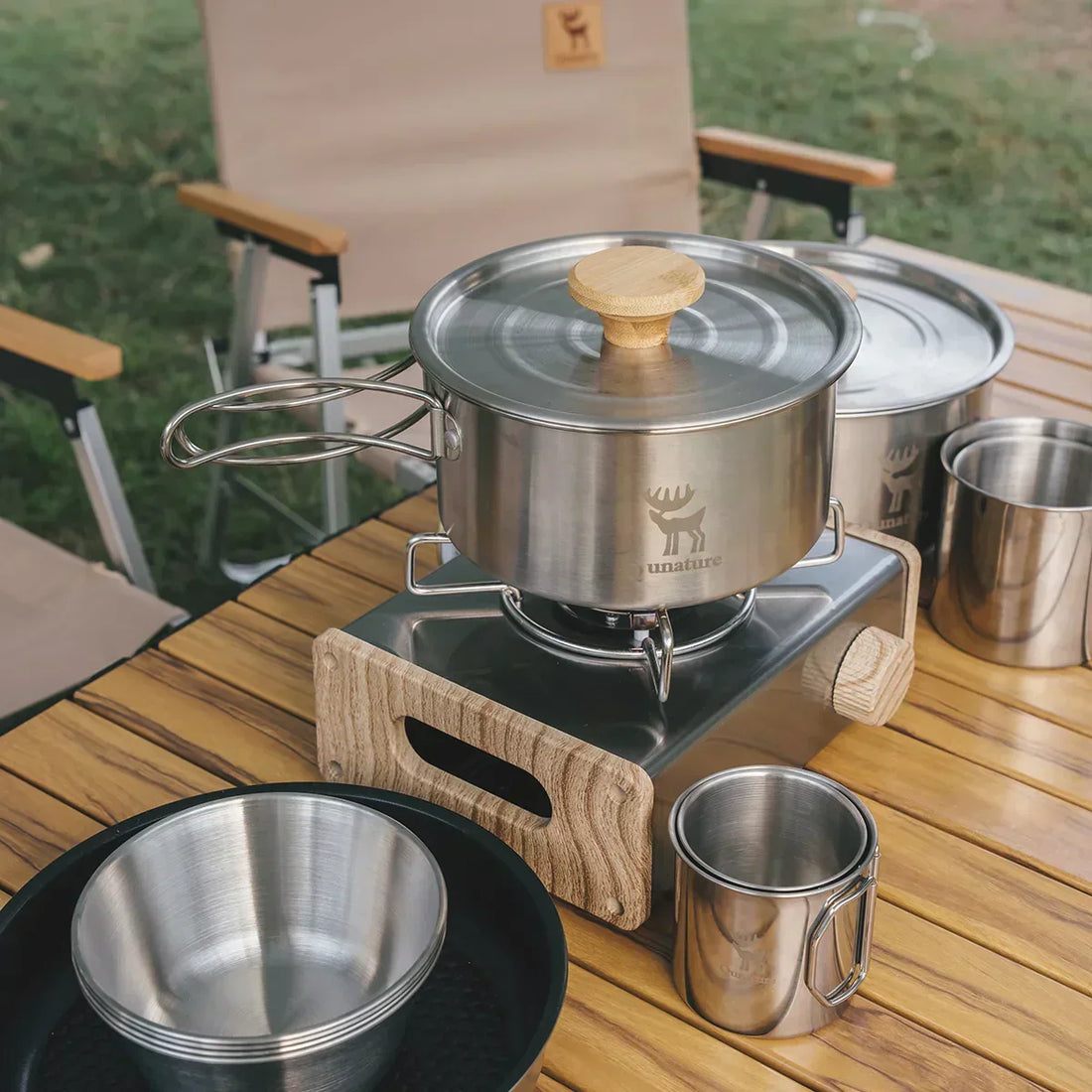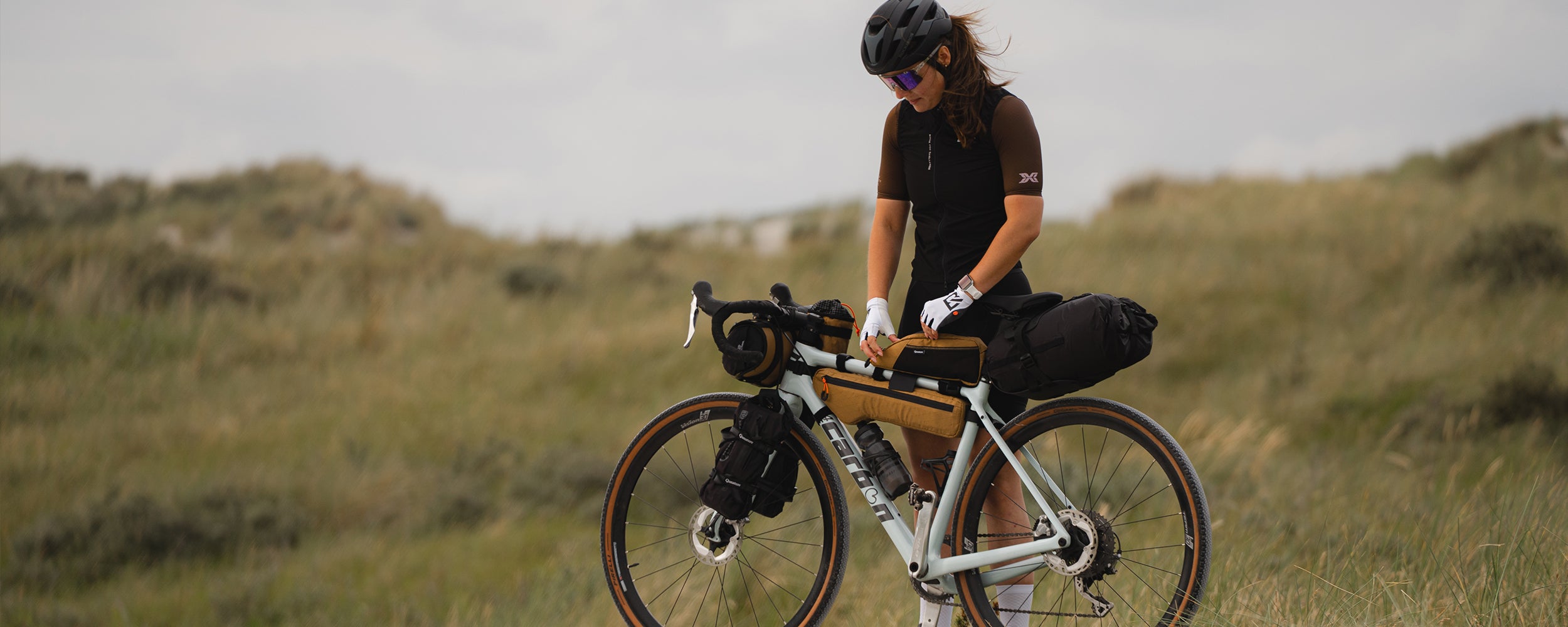Essential Portable Cooking Gear for Every Outdoor Enthusiast
Explore portable cooking gear, tips, and strategies for outdoor adventures. Learn how to cook efficiently, enjoy meals in nature, and make every outdoor experience memorable.

Cooking outdoors is more than just a way to eat -- t's part of the adventure itself. Whether you're deep in the mountains, camping by a quiet lake, or setting up a small camp after a long hike, enjoying a freshly cooked meal surrounded by nature brings warmth, comfort, and energy. For every outdoor enthusiast, choosing the right portable cooking gear can turn a basic meal into a memorable moment.
However, outdoor cooking is very different from cooking at home. It requires the right tools, smart preparation, and a balance between portability and performance. This guide explores essential outdoor cooking gear, useful tips, and practical strategies for preparing food efficiently in the wilderness.

Why Portable Cooking Gear Matters
When you step into the wild, every gram of weight and every inch of space in your backpack matters. Carrying bulky or heavy equipment can make even a short hike exhausting. That's why outdoor cooking gear is designed to be lightweight, durable, and multi-functional.
Having proper camping cookware and stoves offers several key benefits:
- Efficiency: Specialized camping gear ensures you can cook quickly and evenly, even in windy or cold conditions.
- Safety: Portable stoves and cookware are built to handle outdoor environments safely, reducing fire risks.
- Convenience: Foldable, compact, and nesting designs make packing and unpacking easy.
- Sustainability: Many sets are made from recyclable or eco-friendly materials, reducing your footprint.
Cooking in nature is not just about satisfying hunger -- it's about creating balance. A warm meal in cold weather can lift morale, while a cup of tea at sunrise can turn an ordinary morning into something unforgettable. The right gear empowers you to enjoy food as part of the overall outdoor experience, not as a logistical challenge.

Core Components of Portable Cooking Gear
1.Camping Stove
The camping stove is the heart of your outdoor kitchen. Without it, cooking becomes unpredictable. Choosing the right stove depends on where and how you travel.
-
Canister Stoves: Compact and efficient, great for short hikes or solo adventures.
-
Liquid Fuel Stoves: Perform well in cold, high-altitude, or windy environments.
- Wood-Burning Stoves: Sustainable and lightweight, but require time and skill to manage firewood.

If you often travel in groups or cook multiple dishes at once, a double-burner stove can be worth the extra weight. For backpackers, ultralight stoves with integrated pots help reduce gear complexity.
Bonus Tip: Always test your stove before heading out. A quick check ensures there are no leaks, clogs, or missing seals -- issues that can ruin your cooking plans in the wilderness.
2. Cookware
The right camping cookware helps you cook efficiently and clean up easily. Besides pots and pans, many outdoor enthusiasts now carry compact grills or heat diffusers to achieve better control over cooking temperature.
When choosing materials:
-
Titanium Cookware: Ideal for long treks -- ultralight but pricey.
-
Aluminum Cookware: Affordable, evenly distributes heat, good for beginners.
- Stainless Steel Cookware: Heavy but sturdy, best for car or base camping.
Extra considerations:
- Multi-layer bases improve heat distribution.
- Graduated measurements help with portion control.
- Silicone grips protect hands from burns.

3. Utensils and Tools
Outdoor utensils are all about versatility. A single spork and knife can serve multiple purposes, but having a few specialized items can make cooking much easier.
Consider adding:
- A compact grater for cheese or garlic
- Mini whisk for mixing sauces or pancake batter
- Telescopic tongs for grilling over open flames
A well-equipped utensil kit transforms outdoor meals from 'survival mode' to 'comfort cooking'. And don't underestimate the psychological effect of eating from real utensils instead of disposable ones - it adds a sense of normalcy and enjoyment to your outdoor life.

4. Fuel and Fire Accessories
Fuel management is an often-overlooked skill. In cold or windy conditions, fuel consumption can double. Always bring 20-30% extra fuel than you think you'll need, especially on multi-day trips.
Other essentials include:
- Compact windscreen for efficiency
- Waterproof lighter and backup matches
- Foldable fire pit for campfire cooking
- Fireproof mat to protect the ground beneath
When possible, gather small twigs or biomass to supplement stove fuel, but always follow local fire regulations. In some national parks, open fires are restricted — knowing the rules prevents fines and protects the environment.

5. Food Storage and Preparation
Outdoor food safety matters as much as taste. Keep raw ingredients separate from ready-to-eat foods, and store them in leak-proof containers. If your trip lasts several days, use freeze-dried meals for convenience and longevity. Rehydrate them with boiling water for a quick and nutritious meal. You can also pre-cook meals at home and vacuum-seal them for reheating. This saves time, reduces waste, and ensures consistent quality in the wild.

Tips for Cooking Efficiently Outdoors
Cooking outdoors requires adaptability. Weather, altitude, and even wind direction can influence your results.
Pro-level tips:
-
Plan around daylight. Start meal prep before sunset to avoid cooking in the dark.
-
Use lids. They trap heat and reduce fuel use by up to 30%.
-
Keep ingredients dry. Moisture can make ignition difficult.
-
Bring seasoning packets. Salt, pepper, and herbs elevate even simple meals.
- Practice at home. Test your recipes on your gear before your trip.
When done right, cooking outdoors can feel meditative — the rhythm of chopping vegetables, hearing the stove hiss, and smelling food as it cooks in the open air brings a sense of peace few indoor kitchens can match.

Sample Outdoor Meal Plan
Breakfast: Instant oatmeal with nuts, honey, and freeze-dried berries. Pair with coffee brewed in a portable press.
-
Lunch: Rice noodles with mixed vegetables, soy sauce, and pre-cooked tofu.
-
Dinner: Couscous with dehydrated mushrooms, olive oil, and protein of choice.
- Snacks: Trail mix, granola bars, jerky, or chocolate for energy.
To reduce cleanup, line your pots with a thin layer of water before cooking sticky foods. The residue will lift off easily when washing.
Choosing the Right Setup
Your cooking setup should match your adventure style:
-
Backpackers: Go ultralight - one pot, compact stove, spork, and gas canister.
-
Family campers: Opt for a two-burner stove, large pot, and shared utensils.
- Vanlifers or car campers: You can afford more comfort — include cast iron pans or portable grills.
Also, factor in climate. High winds demand windshields and stable burners; humid conditions require sealed storage for food and matches.

Outdoor Cooking Etiquette and Safety
Cooking outdoors is a privilege - not a right. Always follow Leave No Trace principles:
- Cook at least 50 feet from streams or lakes.
- Dispose of waste properly; pack out all trash.
- Never dump gray water near campsites.
- Avoid noisy cooking late at night — nature has its own soundtrack.
- Leave the spot as you found it, or cleaner.
By respecting these rules, you help ensure that future adventurers can enjoy the same pristine landscapes.
The Joy and Connection of Outdoor Cooking
Cooking in nature is about more than survival -- it's about connection. Sharing a meal under a canopy of stars or watching the sunrise with a warm drink creates lasting memories. The process slows you down, forcing you to appreciate the moment: the crackle of fire, the aroma of herbs in a pan, the laughter of friends over a shared meal. In these small acts, outdoor cooking becomes a ritual -- a bridge between people and the wild world around them.

Conclusion
Outdoor cooking blends practicality, creativity, and appreciation for nature. With the right portable cooking gear, your meals become a highlight of every adventure. Whether you're hiking solo, camping with friends, or exploring remote landscapes, the right setup -- compact stoves, efficient cookware, and smart utensils -- empowers you to eat well anywhere. Plan wisely, pack lightly, and respect your surroundings. Because out there, every meal cooked under the open sky is more than food -- it's a simple act that draws you closer to the land, the breeze, and the quiet beauty of nature itself.













